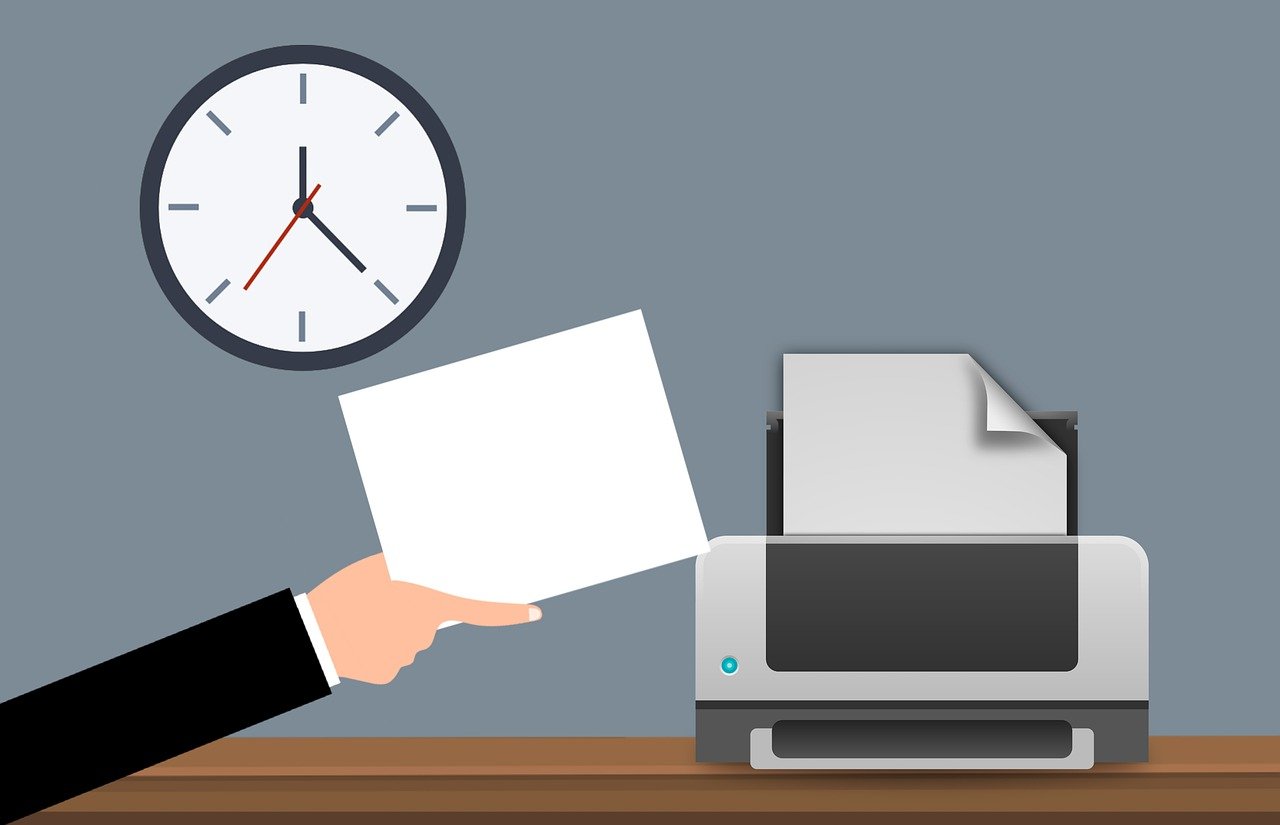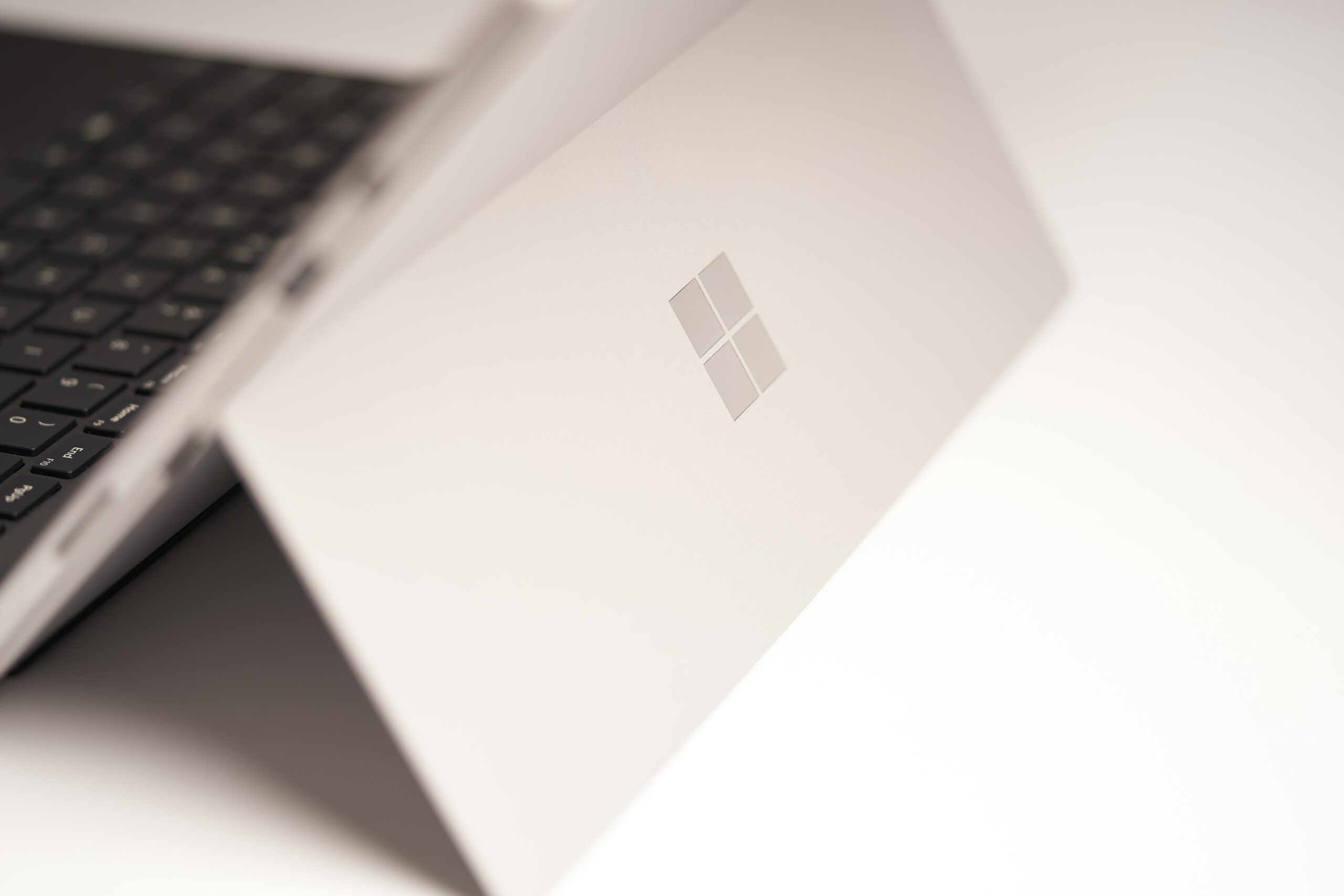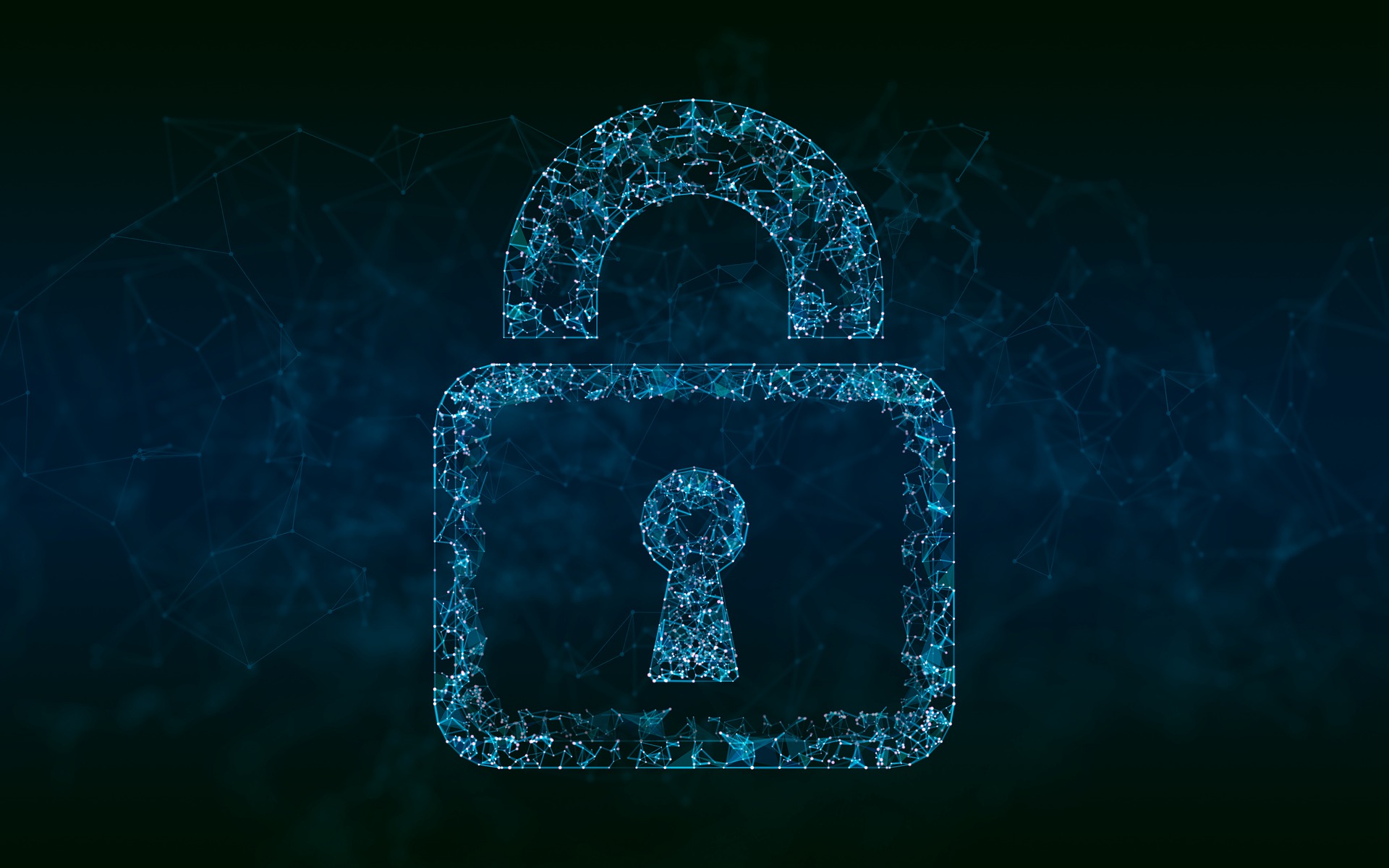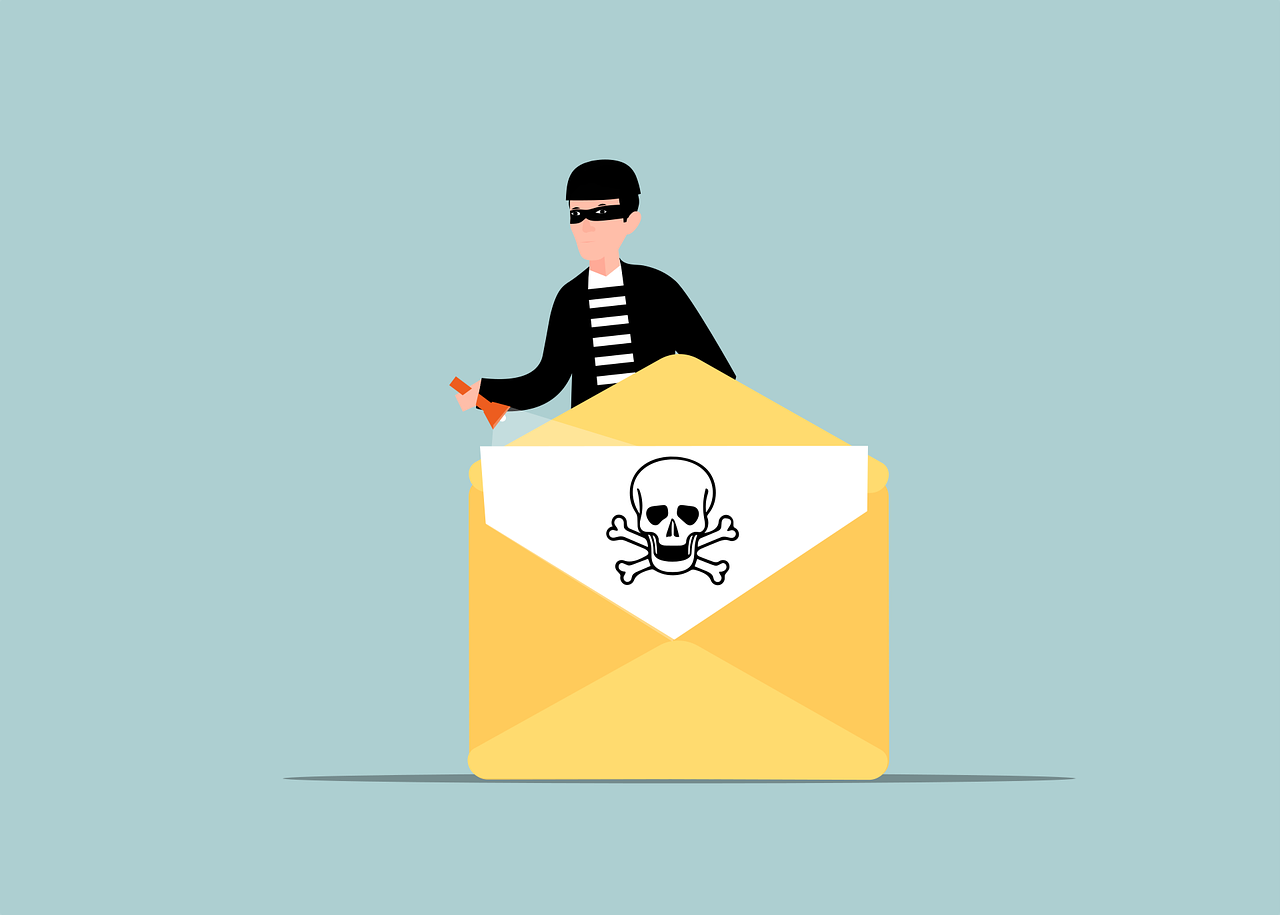Author: wpadmin
Remote work has become increasingly popular in recent times. It provides flexibility and convenience for employees. Additionally, telecommuting reduces office costs for employers. Many also cite productivity benefits due to fewer distractions.
Research shows a 56% reduction in unproductive time when working at home vs. the office.
But there are some drawbacks to working outside the office. It’s crucial to be aware of the cybersecurity risks that come with remote and hybrid work. Keeping an eye on device and network security isn’t as easy. About 63% of businesses have experienced a data breach due to remote employees.
This news doesn’t mean that you must risk security to enjoy remote working. You can strike a balance. Be aware of the cybersecurity concerns and address them to do this.
Below, we’ll discuss some of the top cybersecurity risks associated with remote work. As well as provide practical tips on how employees and employers can address them.
Remote Work Risks & Mitigation
1. Weak Passwords and Lack of Multi-Factor Authentication
Using weak passwords puts accounts at risk of a breach. Also, reusing passwords across several accounts is a big cybersecurity risk. Remote workers often access company systems, databases, and sensitive information from various devices.
To mitigate this risk, you should create strong and unique passwords for each account. Additionally, enable multi-factor authentication (MFA) whenever possible. This adds an extra layer of security by requiring a second form of verification.
Employers can set up access management systems. These solutions help automate the authentication process. They can also deploy safeguards like contextual MFA.
2. Unsecured Wi-Fi Networks
Working remotely often means connecting to different Wi-Fi networks. Such as public hotspots or home networks that may not be adequately secured. These unsecured networks can expose your sensitive data to hackers.
To protect company data, use a Virtual Private Network (VPN). Turn on the VPN when connecting to public or unsecured Wi-Fi networks. A VPN encrypts the internet traffic. This ensures that data remains secure even on untrusted networks.
3. Phishing Attacks
Phishing attacks remain a prevalent threat, and remote workers are particularly vulnerable. Attackers may send deceptive emails or messages. These messages trick users into revealing their login credentials or downloading malicious attachments.
To defend against phishing attacks, be cautious when opening emails. Especially those from unknown sources. Avoid clicking on suspicious links. Verify the sender’s email address.
Also, be wary of any requests for sensitive information. If in doubt, contact your IT support team to confirm the legitimacy of the communication.
4. Insecure Home Network Devices
Many remote workers use Internet of Things (IoT) devices. These include smart speakers, home security systems, and thermostats. These devices can introduce vulnerabilities to your home network if not properly secured.
To address this risk, make sure to change the default passwords on your IoT devices. Also, keep them updated with the latest firmware. Consider creating a separate network for your IoT devices. A “guest” network can isolate them from your work devices and data.
Employers can improve security for remote teams using an endpoint device manager. Such as Microsoft Intune, or similar. These devices make it easier to manage security across many employee devices.
5. Lack of Security Updates
Regularly updating your devices and software is crucial for maintaining strong cybersecurity. Remote workers may neglect these updates due to busy schedules or limited awareness. Cybercriminals often exploit vulnerabilities in outdated software to gain unauthorized access to systems.
To mitigate this risk, enable automatic updates on devices and software whenever possible. Regularly check for updates. Install them promptly to ensure you have the latest security patches.
6. Data Backup and Recovery
Remote workers generate and handle a significant amount of data. The loss or corruption of this data can be devastating. Implementing a robust data backup and recovery plan is essential.
Back up your important files to a secure cloud storage service or an external hard drive. This ensures that if a hacker compromises a device, your data remains safe and can be easily restored.
7. Insufficient Employee Training
Remote workers should receive proper cybersecurity training. It helps them to understand security risks and best practices. Unfortunately, many companies neglect this aspect of cybersecurity. This leaves employees unaware of the potential threats they may encounter.
Organizations must provide comprehensive cybersecurity training to remote workers. This training should cover topics such as:
- Identifying phishing emails
- Creating strong passwords
- Recognizing suspicious online behavior
- New forms of phishing (such as SMS-based “smishing”)
Get Help Improving Remote Team Cybersecurity
Remote work offers many benefits. But it’s important to remain vigilant about the associated cybersecurity risks. Address these risks head-on and put in place the suggested measures. If you’d like some help, just let us know.
Give us a call today to schedule a chat.
This Article has been Republished with Permission from The Technology Press.
In today’s digital workplace, printing remains an essential function. This is true for just about all businesses. But keeping up with your print infrastructure can be a time-consuming task. One printer down can mean work comes to a standstill.
Another issue is keeping up with all those printer drivers. If firmware updates aren’t done, vulnerabilities exist. One unprotected printer can cause an entire network malware infection.
Microsoft has come up with an answer to streamline print management. This solution is called Microsoft Universal Print. It offers a modern answer to age-old print problems.
Looking to improve how you handle document printing? Do you wish you could avoid printer problems? Below, we’ll explore the benefits and features of Microsoft Universal Print. We’ll also help you discover how it can enhance your printing environment.
What Can Microsoft Universal Print Do for You?
Microsoft Universal Print leverages the power of Microsoft 365 and Azure. It eliminates the need for complex on-premises print infrastructure. Here are some of the ways that it can improve your document handling.
Simplifying Print Management
Microsoft Universal Print eliminates the need for on-premises print servers. Print management becomes more simplified and all in one place. Organizations can centrally manage their printing needs from the cloud.
This ease of use removes the need for complex print server configurations. As well as driver installations and print queue management. This results in significant time and cost savings.
Seamless Integration with Microsoft 365
A key advantage of Universal Print is its seamless integration with Microsoft 365. It works in tandem with Azure Active Directory. This ensures a secure and authenticated printing experience for users.
This integration allows users to print from any device, whether it’s a Windows PC, Mac, or mobile device. There’s no need for complex setup or driver installations. It simplifies the printing process. It also enhances productivity for employees working across different platforms.
Flexibility and Scalability
With Microsoft Universal Print, organizations gain flexibility and scalability in their print activities. It supports both modern and legacy printers. This allows businesses to leverage their existing printer fleet.
Universal Print enables easy connectivity. This is true whether it’s a local printer or a network printer. As well as management through the cloud. Additionally, it offers centralized control and monitoring of printers. This makes it effortless to scale up or down based on business needs.
Streamlined Printer Deployment
Deploying printers across an organization can be a time-consuming task. Microsoft Universal Print simplifies this process. It does this by providing a centralized portal for printer management.
Administrators can easily add and configure printers. They can assign them to specific users or groups. As well as manage printer settings from a single interface. This eliminates the need for manual configuration on individual devices. Which can be very time-consuming and fraught with issues. It also ensures a consistent printing experience across the organization.
Enhanced Security and Compliance
A big benefit of using Microsoft Universal Print is its security capabilities. Print security is a critical concern for businesses, especially in today’s threat landscape. Microsoft Universal Print enhances security by leveraging Azure Active Directory. It’s used for authentication and access control.
It also supports secure print release. This means that sensitive documents are only printed under certain circumstances. Namely, when the authorized user is physically present at the printer.
Moreover, Universal Print integrates with Microsoft Endpoint Manager. This gives organizations even more capabilities. They can enforce security policies and manage print-related settings from a centralized location.
Insights and Analytics
Understanding print usage and optimizing print infrastructure is essential for efficient cost management. Microsoft Universal Print provides insights and analytics that help organizations gain visibility. They’re able to see print usage patterns. As well as track printing costs and identify opportunities for optimization.
With detailed reporting and analytics, businesses can make informed decisions. Reporting enables better print resource allocation. As well as the implementation of strategies to reduce printing costs.
Is Microsoft Universal Print for You?
Microsoft Universal Print offers a modern and efficient approach to print management. It streamlines the printing experience for organizations. It also eliminates the need for complex on-premises print infrastructure. There are also important benefits from the boost in security.
But is it for you?
We can help you understand the full capabilities of Microsoft Universal Print. Including the costs versus the benefits. Whether the solution is for you will depend on your printing needs. Extra factors to consider will be how often you print and your number of endpoints.
Get Cost-Efficient Technology Answers
It’s not easy to make software decisions on your own. That’s why we’re here to help! We can sit down with you to discuss your current infrastructure. We’ll help you evaluate solutions, like Microsoft Universal Print. Then, we’ll tell you straight up what makes the most sense for you.
Give us a call today to chat about your technology needs.
This Article has been Republished with Permission from The Technology Press.
Moving can be a chaotic and stressful time. Especially when it comes to handling your valuable technology. Whether you’re relocating your home or office, it’s essential to take extra care. Both with fragile items and when packing and moving your devices and other tech items.
To help you navigate this process smoothly, we’ve put together a handy checklist. Use this to help ensure your technology remains safe and sound during the move.
Back-Up Everything
Before you start disassembling your technology, make sure to back up all your data. Create copies of important files, documents, photos, and any other irreplaceable information. You can either use an external hard drive, cloud storage, or both. By doing this, you’ll have peace of mind knowing you’ve protected your data. Should something unfortunate happen during the move, your files will be intact.
Organize and Label Cables
We all know the struggle of untangling a mess of cables. This is true especially when you’re eager to set up your devices in the new place. To avoid this headache, take the time to organize and label your cables before packing.
Use cable ties or twist ties to keep them neatly bundled. Attach labels to identify which cable belongs to which device. Trust us; this simple step will save you a lot of time and frustration later on.
Pack Devices Carefully
When packing your devices, opt for their original boxes whenever possible. If you have the storage space, this is why you don’t want to toss those out. The original packaging is designed to provide the best protection during shipping. There are usually specific compartments to secure each component.
If you don’t have the original boxes, use sturdy cardboard boxes. Wrap each device in bubble wrap or anti-static foam to prevent any damage. Fill any empty spaces in the boxes with packing peanuts or crumpled paper to ensure a snug fit.
Remove Ink Cartridges and Batteries
It might seem easier to just load up your printers “as is” to move them. But that’s not a good idea. For printers and devices that use ink, it’s crucial to remove those cartridges. Do this before packing the devices. Ink cartridges can leak or dry out during transit. This can cause a mess or render them useless.
Also, remove batteries from devices such as laptops, cameras, or remote controls. This precaution prevents accidental power-on and potential damage during the move. Pack the cartridges and batteries separately in sealed bags and label them.
Take Photos of Cable Connections
Before unplugging cables from your devices, snap a quick photo of the connections. This visual reference will be very helpful when it’s time to set up everything at your new location. You won’t have to worry about remembering which cable goes where. And won’t need to spend hours trying to figure it out. Simply refer to the photos, and you’ll be back up and running in no time!
Pack Your Wi-Fi Equipment Separately
Reconnecting to the internet is usually one of the first things done for both home and office moves. To make it easier, pack all your Wi-Fi network equipment separately from other items.
This includes your modem, router, ethernet cables, and other network connectors. Clearly label the box “Wi-Fi Equipment” so you’ll know right where to go first to get online.
Secure Fragile Screens
Are you moving devices with delicate screens, such as TVs or monitors? Then take extra precautions to protect them from scratches and cracks.
Place a soft cloth or microfiber cloth over the screen. Secure it with elastic bands or tape. This barrier will shield the screen from any accidental contact during transit. Additionally, make sure to pack these items in a vertical position to reduce the risk of damage.
Inform the Movers about Fragile Items
When enlisting professional movers, be sure to be clear about your technology. Inform them about the fragile nature of your devices and other tech items. Clearly label the boxes containing your valuable devices as “fragile.” Provide any necessary instructions to handle them with care. By communicating your concerns upfront, you reduce the chances of accidents while moving.
Test Everything After the Move
If you’ve moved offices, you don’t want to find out about problems on a busy Monday morning. Once you’ve moved your technology and reconnected cables, turn your devices on. Test them to ensure they work as usual and weren’t damaged.
Something may not look damaged on the outside. But that doesn’t mean that there isn’t internal damage. You want to know this upfront so you can file a claim and call in an IT service professional to help.
Need Help with a Safe Technology Move?
Moving can be a hectic and challenging process, especially when moving office tech. But with the right approach, you can ensure the safety of your devices from point A to point B.
Need help from the pros to move your technology securely? Give us a call today to schedule a chat.
This Article has been Republished with Permission from The Technology Press.
In today’s digital age, technology plays a significant role in our lives. But along with the rapid advancements and innovations, several myths have persisted.
Is it okay to leave your smartphone charging overnight? Do Macs get viruses? And what about those 5G towers? What’s going on with those?
Common tech myths can often lead to misunderstandings. They can even hinder your ability to fully use various tools and devices. In this blog post, we will debunk some of the most common tech myths that continue to circulate. We’ll also explore the truth behind them.
Myth 1: Leaving your device plugged in overnight damages the battery.
First is one of the most persistent tech myths. Leaving your device plugged in overnight will harm the battery life. But this myth is largely outdated.
Modern smartphones, laptops, and other devices have advanced battery management systems. These systems prevent overcharging.
Once your device reaches its maximum charge capacity, it automatically stops charging. This is true even if it remains connected to the power source. In fact, it is often recommended to keep your device plugged in overnight to ensure a full charge by morning.
So, feel free to charge your gadgets overnight without worrying about battery damage.
Myth 2: Incognito mode ensures complete anonymity.
Many users believe that using incognito mode in web browsers guarantees complete anonymity. They feel completely secure while surfing the internet using this mode. But this is not entirely accurate. While incognito mode does provide some privacy benefits, they’re limited.
For example, it mainly prevents your device from saving the following items:
- Browsing history
- Cookies
- Temporary files
However, it does not hide your activities from your internet service provider (ISP). Nor from the websites you visit. ISPs and websites can still track your IP address. They can also still watch your online behavior and collect data.
Do you truly want to remain anonymous online? Then consider using a virtual private network (VPN). Or other specialized tools that provide enhanced privacy protection.
Myth 3: Macs are immune to viruses.
Another prevalent myth is that Mac computers are impervious to viruses and malware. It is true that Macs have historically been less prone to such threats compared to Windows PCs. This does not make them immune.
Some people that tout this myth point to malware statistics. For example, in 2022, 54% of all malware infections happened in Windows systems. Just 6.2% of them happened in macOS.
But you also need to factor in operating system (OS) market share. As of January 2023, Windows had about 74% of the desktop OS share. Mac’s OS had just 15%.
When you consider this, it turns out the systems aren’t that different when it comes to virus and malware risk. The infection rate per user on Macs is 0.075. This is slightly higher than on Windows, at 0.074. So, both systems have a pretty even risk of infection. This is the case even though Macs have a significantly lower infection count.
As the popularity of Macs has grown, so has the interest of hackers in targeting these devices. Malicious software specifically designed for Macs does exist. Users should take proper precautions, no matter the operating system in use.
You need to install reliable antivirus software. As well as keeping the operating system and applications up to date. Exercise caution when downloading files or clicking on suspicious links. Being aware of potential security risks and practicing safe browsing habits is crucial. This is true for Mac users, just as it is for any other platform.
Myth 4: More megapixels mean better image quality.
When it comes to smartphone cameras, savvy marketing sometimes leads to myths. Many people believe that more megapixels equal better image quality. This is a common misconception.
Megapixels are an essential factor in determining the resolution of an image. But they are not the sole indicator of image quality. Other factors play a significant role. Such as:
- The size of individual pixels
- Lens quality
- Image processing algorithms
- Low-light performance
A camera with a higher megapixel count may produce larger images. But it does not guarantee superior clarity, color accuracy, or dynamic range.
Manufacturers often strike a balance between pixel count and other image processing technologies. They do this to achieve optimal results. When choosing a smartphone or any camera, consider the complete camera system. Don’t only focus on the megapixel count.
Separate Fact from Fiction
In a world where technology is an integral part of our lives, you must separate fact from fiction. Debunking common tech myths can empower you to make informed decisions. It can also maximize the potential of your digital experiences. An understanding of the truth behind these myths helps you use technology more effectively. It can also help you better protect your privacy.
Get the Technology Facts from a Trusted Pro
Whether you need help with an infected PC or setting up a corporate network, we’re here for you. We cut through the tech myths to bring you reliable and efficient service.
Give us a call today to chat about your technology goals and challenges.
This Article has been Republished with Permission from The Technology Press.
Cybersecurity threats are becoming increasingly sophisticated and prevalent. In 2022, ransomware attacks jumped by 93%. The introduction of ChatGPT will only increase the potential damage of cyber-attacks.
Protecting sensitive data and systems requires a comprehensive approach. One that goes beyond a single security solution. This is where a defense-in-depth cybersecurity strategy comes into play.
In this article, we will explore the advantages of adopting a defense-in-depth approach. As well as its benefits for safeguarding your network and mitigating cyber risks.
What Does a Defense-in-Depth Approach Mean?
First, let’s define what it means to use a defense-in-depth approach to cybersecurity. In simple terms, it means having many layers of protection for your technology.
Just like how you might have locks on your doors, security cameras, and an alarm system to protect your home. A defense-in-depth strategy uses different security measures to safeguard your digital assets.
Many layers are better than one when it comes to security. A defense-in-depth strategy combines various defenses. This is to make it harder for cyber attackers to succeed.
These defenses can include things like:
- Firewalls
- Antivirus software
- Strong passwords
- Encryption
- Employee training
- Access management
- Endpoint security
A defense-in-depth strategy also emphasizes early detection and rapid response. It involves using tools and systems that can quickly detect suspicious activities. This enables you to catch an attacker early. And take action to reduce any damage.
A defense-in-depth cybersecurity strategy provides a strong and resilient defense system. Its several layers of security increase the chances of staying secure. This is especially important in today’s dangerous online world.
Advantages of Adopting a Defense-in-Depth Approach
Enhanced Protection
A defense-in-depth strategy protects your infrastructure in many ways. This makes it harder for attackers to breach your systems. Implementing a combination of security controls creates a robust security posture. Each layer acts as a barrier. If one layer fails, the others remain intact. This minimizes the chances of a successful attack.
Early Detection and Rapid Response
With a defense-in-depth approach, you have many security measures that can detect threats. As well as alert you to these potential dangers.
Some systems used to detect suspicious activities and anomalies in real-time are:
- Intrusion detection systems
- Network monitoring tools
- Security incident and event management (SIEM) solutions
This early detection allows you to respond quickly. This minimizes the impact of a potential breach. It also reduces the time an attacker has to access critical assets.
Reduces Single Point of Failure
A defense-in-depth strategy ensures that there is no single point of failure. Such as a single vulnerability that could compromise your entire security infrastructure. Relying solely on one security measure, such as a firewall, could prove catastrophic. Especially if it fails or if attackers find a way to bypass it.
It’s better to diversify your security controls. You create a resilient defense system. One where the failure of one control does not lead to a complete breach.
Protects Against Advanced Threats
Cybercriminals continually evolve their techniques to overcome traditional security measures. A defense-in-depth approach accounts for this reality. It incorporates advanced security technologies. Such as behavior analytics, machine learning, and artificial intelligence. These technologies can identify and block sophisticated threats. This includes zero-day exploits and targeted attacks. They do this by analyzing patterns and detecting anomalies in real-time.
Compliance and Regulatory Requirements
Many industries are subject to specific compliance and regulatory requirements. Such as the General Data Protection Regulation (GDPR) or the Health Insurance Portability and Accountability Act (HIPAA). Adopting a defense-in-depth strategy can help you meet these requirements.
By implementing the necessary security controls, you show a proactive approach. It’s proof of your efforts to protect sensitive data. This can help you avoid legal and financial penalties associated with non-compliance.
Flexibility and Scalability
A defense-in-depth strategy offers flexibility and scalability. This allows you to adapt to evolving threats and business needs. New technologies and security measures emerge all the time. You can integrate them seamlessly into your existing security framework.
Furthermore, you can scale your security controls as your organization grows. This ensures that your cybersecurity strategy remains effective. As well as aligned with your expanding infrastructure.
Employee Education and Awareness
A defense-in-depth approach extends beyond technology. It encompasses employee education and awareness. Educating your employees about cybersecurity best practices can significantly reduce risk. Especially those coming from human error and social engineering attacks.
Training and awareness programs create a human firewall. This complements your technical controls. It’s also a key component of any defense-in-depth cybersecurity approach.
Protect Your Business from Today’s Sophisticated Cyber Threats
We are in an era where cyber threats are constantly evolving. They are becoming even more sophisticated with AI. A defense-in-depth cybersecurity strategy is a must. Having many layers of security can significantly enhance your protection against cyber threats.
Looking to learn more about a defense-in-depth approach? Give us a call today to schedule a cybersecurity chat.
This Article has been Republished with Permission from The Technology Press.
Advanced AI is a new buzzword in cloud computing. The launch of tools like ChatGPT and Bard have made big waves. Developers are now racing to introduce the next level of features to apps. Features that do part of your work for you. Such as writing emails or making follow-up checklists based on contact data.
These AI-based applications do much more than automate processes. People are using them to write business correspondence, create websites, and write scripts. AI is also quickly transforming the everyday office workflow.
Microsoft is one of the biggest players in the office application field. It’s at the forefront of introducing transformative technology. The company is about to transform Microsoft 365 in a huge way with its new Copilot tool.
Microsoft 365 Copilot is a new tool designed to help users get the most out of their Microsoft 365 apps. This revolutionary tool is an intelligent, personalized assistant. It’s designed to help users navigate and use M365 more efficiently.
In this article, we’ll take a closer look at Microsoft 365 Copilot. And tell you the key ways it’s going to improve M365 apps and your business workflows.
What is Microsoft 365 Copilot?
Microsoft 365 Copilot is an AI-powered assistant. It helps users with their day-to-day tasks in M365 apps. It’s like having a personal assistant right in your Office apps. Users can ask questions, get help with tasks, and receive personalized recommendations. Copilot responds leveraging the context of their usage patterns.
Microsoft 365 Copilot works across all M365 apps. This includes:
- Word
- Excel
- PowerPoint
- Outlook
- Teams
- and more
Whether you’re doing any number of tasks, Microsoft 365 Copilot is there to assist you. This includes working on a document, meeting scheduling, or collaborating with a team.
How Does Microsoft 365 Copilot Work?
Microsoft 365 Copilot uses AI and machine learning to understand users’ needs. It provides personalized help. It uses data from users’ interactions with M365 apps. It learns a user’s usage patterns and offers recommendations based on their preferences.
For example, say you frequently use certain features in Excel. Microsoft 365 Copilot will learn this. It will offer suggestions when it detects that you’re working on a similar task.
Say that you’re working on a presentation in PowerPoint and struggling with design. Microsoft 365 Copilot can offer design suggestions based on your company’s brand guidelines.
Microsoft 365 Copilot can also help users with common tasks. Tasks such as, scheduling meetings and managing emails. Users can simply ask Copilot for help. They can ask it to schedule a meeting or find an email from a specific person, and Copilot will take care of the rest.
Why is Microsoft Copilot Important?
Copilot is important because it can help users be more productive and efficient. By providing personalized support, the tool can save users time and reduce frustration.
Imagine you’re working on a report in Word and you’re struggling to format a table. Instead of spending time searching for a solution online. Or trying to figure it out on your own, you can simply ask Microsoft 365 Copilot for help. Copilot can offer suggestions. It can even walk you through the process, saving you time and reducing frustration.
Microsoft 365 Copilot is also important because it can help users get more out of their M365 apps. Many users may not be aware of all the features and capabilities of their M365 apps. But with Copilot, they can discover new ways to work more efficiently and effectively.
The capabilities of Copilot go even further. Say that you need to give your team an update on a marketing strategy. You won’t need to dig out emails, chat threads, or meeting notes. Instead, you can ask Copilot to “tell my team how we updated the marketing strategy.” The app will then search all those places for you and craft an update for your team.
Need a first draft of a meeting agenda or presentation? Just ask Copilot. It can access existing M365 documents and content and craft an initial draft for you.
Benefits of Using Microsoft 365 Copilot
Personalized Help
Microsoft 365 Copilot provides personalized help based on users’ usage patterns and preferences. This means that users get the help they need when they need it, without having to search for solutions on their own.
Time-Saving
Microsoft 365 Copilot can help users save time on common tasks. Such as scheduling meetings and formatting documents. It can take on many information gathering tasks, like summarizing meeting notes. This saves users considerable time. Especially for manual tasks such as searching for information.
Knowledge workers spend an average of 2.5 hours per day searching for information.
Reduced Frustration
Microsoft 365 Copilot can help reduce frustration. It provides solutions when users are stuck on a task. The tool can also help users struggling with an Excel chart or table. Instead of having to figure out how to generate it, they can simply give a command to Copilot to do it for them.
Improved Productivity
Microsoft Copilot handles tasks that go beyond what business apps have historically done. For example, you can use it in PowerPoint to create a presentation for you. Use a command such as, “Create a six-slide presentation based on (this) document.” You can also tell it to find appropriate Microsoft stock photos and insert them.
The sky is the limit right now for how much this tool is going to impact office productivity.
When Will Microsoft 365 Copilot Be Available?
At the writing of this article, Microsoft hasn’t announced a release date yet. It is currently testing Copilot with a limited number of users. You will most likely see it coming out sometime soon.
Improve Your Microsoft 365 Value & Security
Need help with security or setup in Microsoft 365? Give us a call today to talk to one of our cloud app experts.
This Article has been Republished with Permission from The Technology Press.
Online shopping has become a common activity for many people. It’s convenient, easy, and allows us to buy items from the comfort of our homes. But with the rise of online shopping, there are concerns about privacy and security.
Not all shopping apps are created equally. Often people get excited and install an app without checking privacy practices. Apps can collect more data from your smartphone than you realize. Whether you use your phone for personal use, business use, or both, your data can be at risk. So can your privacy.
Shady Data Collection Practices from Popular Shopping App SHEIN
Recently, security experts found a popular shopping app spying on users’ copy-and-paste activity. This app was tracking users’ keystrokes, screenshots, and even their GPS location. This raises the question: Is your online shopping app invading your privacy?
SHEIN is the app in question, and it’s a popular shopping app with millions of users. According to reports, researchers found the app collecting data from users’ clipboards. This included any text that users copied and pasted. This means that if the user copied and pasted sensitive information, the app would have access to it. Including things like passwords or credit card numbers.
Not only that but the app was also found to be tracking users’ GPS location. SHEIN was also collecting data from device sensors, including the accelerometer and gyroscope. This means that the app was able to track users’ movements. As well as collecting information about how they were using their device.
The app’s developers claimed that the data collection was for “optimizing user experience.” A very vague explanation that’s used by other app developers as well. The developers stated that the collected data was only used for internal purposes. But this explanation wasn’t enough to please privacy experts. Those experts raised concerns about the app’s data collection practices.
Temu Data Collection Practices Questioned
This isn’t the first time people caught an app grabbing data without users’ knowledge. Many popular apps collect data from their users, often for targeted advertising purposes.
The popularity of the shopping app Temu has been exploding recently. Since the app appeared in a Superbowl Ad in 2023, people have been flocking to it.
But Temu is another shopping app with questionable data collection practices. Some of the data that Temu collects includes:
- Your name, address, phone number
- Details you enter, like birthday, photo, and social profiles
- Your phone’s operating system and version
- Your IPS address and GPS location (if enabled)
- Your browsing data
So, what can you do to protect your privacy when using online shopping apps? Read on for a few tips.
Tips to Protect Your Privacy When Using Shopping Apps
Know What You’re Getting Into (Read the Privacy Policy)
Yes, it’s hard to stop and read a long privacy policy when you just want to use an app. But, if you don’t, you could end up sharing a lot more than you realize.
Before downloading an app, make sure to read its privacy policy. This will give you an idea of what data the app takes and how it’s used. You can try searching keywords like “collect” and “your data” to save time. This can help you jump to data collection details.
If you do this before you download, you may change your mind. After learning how much data the app collects from you, you may decide it just isn’t worth it.
Turn Off Sharing Features
Turn off any data-sharing features you don’t need in your phone’s settings. Such as location services. Most smartphones allow you to choose which apps you want to use it with.
Explore both your phone settings and the app’s settings to restrict data sharing as much as possible.
Remove Apps You Don’t Use
If you’re not using the app regularly, remove it from your phone. Having unused apps on your phone is a big risk. Even if they’re not actively in use, those apps can still collect data. For example, browsing activity or your activity in other mobile apps.
Research Apps Before You Download
It’s easy to get caught up in a fad. You hear your friend talk about an app, and you want to check it out. But it pays to research before you download. Look up the app and check security and data collection keywords. Inform yourself first before downloading an app that might be compromising your device data and activity.
Shop on a Website Instead
You can limit the dangerous data collection of shopping apps by using a website instead. Most legitimate companies have an official website. One where you can buy the same things as you can buy using the app.
Improve Your Mobile Device Security
Mobile devices are regularly used more than computers. But they often lack the same type of security. Give us a call today to schedule a chat about protecting your mobile device data.
This Article has been Republished with Permission from The Technology Press.
As cyber threats continue to increase, businesses must take proactive steps. They need to protect their sensitive data and assets from cybercriminals. Threats to data security are persistent and they come from many different places.
Today’s offices are digitally sophisticated. Just about every activity relies on some type of technology and data sharing. Hackers can breach these systems from several entry points. This includes computers, smartphones, cloud applications, and network infrastructure.
It’s estimated that cybercriminals can penetrate 93% of company networks.
One approach that can help organizations fight these intrusions is threat modeling. Threat modeling is a process used in cybersecurity. It involves identifying potential threats and vulnerabilities to an organization’s assets and systems.
Threat modeling helps businesses prioritize their risk management and mitigation strategies. The goal is to mitigate the risk of falling victim to a costly cyber incident.
Here are the steps businesses can follow to conduct a threat model.
Identify Assets That Need Protection
The first step is to identify assets that are most critical to the business. This includes sensitive data, intellectual property, or financial information. What is it that cybercriminals will be going after?
Don’t forget to include phishing-related assets. Such as company email accounts. Business email compromise is a fast-growing attack. It capitalizes on breached company email logins.
Identify Potential Threats
The next step is to identify potential threats to these assets. Some common threats could be cyber-attacks such as phishing. Others would be ransomware, malware, or social engineering.
Another category of threats could be physical breaches or insider threats. This is where employees or vendors have access to sensitive information.
Remember, threats aren’t always malicious. Human error causes approximately 88% of data breaches. So, ensure you’re aware of mistake-related threats, such as:
- The use of weak passwords
- Unclear cloud use policies
- Lack of employee training
- Poor or non-existent BYOD policies
Assess Likelihood and Impact
Once you’ve identified potential threats, take the next step. This is to assess the likelihood and impact of these threats. Businesses must understand how likely each threat is to occur. As well as the potential impact on their operations, reputation, and financial stability. This will help rank the risk management and mitigation strategies.
Base the threat likelihood on current cybersecurity statistics. As well as a thorough vulnerability assessment. It’s best this assessment is by a trusted 3rd party IT service provider. If you’re doing your assessment with only internal input, you’re bound to miss something.
Prioritize Risk Management Strategies
Prioritize risk management strategies next. Base this on the likelihood and impact of each potential threat. Most businesses can’t tackle everything at once due to time and cost constraints. So, it’s important to rank solutions based on the biggest impact on cybersecurity.
Some common strategies to consider include implementing:
- Access controls
- Firewalls
- Intrusion detection systems
- Employee training and awareness programs
- Endpoint device management
Businesses must also determine which strategies are most cost-effective. They should also align with their business goals.
Continuously Review and Update the Model
Threat modeling is not a one-time process. Cyber threats are constantly evolving. Businesses must continuously review and update their threat models. This will help ensure that their security measures are effective. As well as aligned with their business objectives.
Benefits of Threat Modeling for Businesses
Threat modeling is an essential process for businesses to reduce their cybersecurity risk. Identifying potential threats and vulnerabilities to their assets and systems is important. It helps them rank risk management strategies. As well as reduce the likelihood and impact of cyber incidents.
Here are just a few of the benefits of adding threat modeling to a cybersecurity strategy.
Improved Understanding of Threats and Vulnerabilities
Threat modeling can help businesses gain a better understanding of specific threats. It also uncovers vulnerabilities that could impact their assets. It identifies gaps in their security measures and helps uncover risk management strategies.
Ongoing threat modeling can also help companies stay out in front of new threats. Artificial intelligence is birthing new types of cyber threats every day. Companies that are complacent can fall victim to new attacks.
Cost-effective Risk Management
Addressing risk management based on the likelihood and impact of threats reduces costs. It can optimize company security investments. This will help ensure that businesses divide resources effectively and efficiently.
Business Alignment
Threat modeling can help ensure that security measures align with the business objectives. This can reduce the potential impact of security measures on business operations. It also helps coordinate security, goals, and operations.
Reduced Risk of Cyber Incidents
By implementing targeted risk management strategies, businesses can reduce risk. This includes the likelihood and impact of cybersecurity incidents. This will help to protect their assets. It also reduces the negative consequences of a security breach.
Get Started with Comprehensive Threat Identification
Wondering how to get started with a threat assessment? Our experts can help you put in place a comprehensive threat modeling program. Give us a call today to schedule a discussion.
This Article has been Republished with Permission from The Technology Press.
In recent years, electronic mail (email for short) has become an essential part of our daily lives. Many people use it for various purposes, including business transactions. With the increasing dependence on digital technology, cybercrime has grown. A significant cyber threat facing businesses today is Business Email Compromise (BEC).
Why is it important to pay particular attention to BEC attacks? Because they’ve been on the rise. BEC attacks jumped 81% in 2022, and as many as 98% of employees fail to report the threat.
What is Business Email Compromise (BEC)?
Business Email Compromise (BEC) is a type of scam in which criminals use email fraud to target victims. These victims include both businesses and individuals. They especially target those who perform wire transfer payments.
The scammer pretends to be a high-level executive or business partner. Scammers send emails to employees, customers, or vendors. These emails request them to make payments or transfer funds in some form.
According to the FBI, BEC scams cost businesses around $1.8 billion in 2020. That figure increased to $2.4 billion in 2021. These scams can cause severe financial damage to businesses and individuals. They can also harm their reputations.
How Does BEC Work?
BEC attacks are usually well-crafted and sophisticated, making it difficult to identify them. The attacker first researches the target organization and its employees. They gain knowledge about the company’s operations, suppliers, customers, and business partners.
Much of this information is freely available online. Scammers can find it on sites like LinkedIn, Facebook, and organizations’ websites. Once the attacker has enough information, they can craft a convincing email. It’s designed to appear to come from a high-level executive or a business partner.
The email will request the recipient to make a payment or transfer funds. It usually emphasizes the request being for an urgent and confidential matter. For example, a new business opportunity, a vendor payment, or a foreign tax payment.
The email will often contain a sense of urgency, compelling the recipient to act quickly. The attacker may also use social engineering tactics. Such as posing as a trusted contact or creating a fake website that mimics the company’s site. These tactics make the email seem more legitimate.
If the recipient falls for the scam and makes the payment, the attacker will make off with the funds. In their wake, they leave the victim with financial losses.
How to Fight Business Email Compromise
BEC scams can be challenging to prevent. But there are measures businesses and individuals can take to cut the risk of falling victim to them.
Educate Employees
Organizations should educate their employees about the risks of BEC. This includes providing training on how to identify and avoid these scams. Employees should be aware of the tactics used by scammers. For example, urgent requests, social engineering, and fake websites.
Training should also include email account security, including:
- Checking their sent folder regularly for any strange messages
- Using a strong email password with at least 12 characters
- Changing their email password regularly
- Storing their email password in a secure manner
- Notifying an IT contact if they suspect a phishing email
Enable Email Authentication
Organizations should implement email authentication protocols.
This includes:
- Domain-based Message Authentication, Reporting, and Conformance (DMARC)
- Sender Policy Framework (SPF)
- DomainKeys Identified Mail (DKIM)
These protocols help verify the authenticity of the sender’s email address. They also reduce the risk of email spoofing. Another benefit is to keep your emails from ending up in junk mail folders.
Deploy a Payment Verification Processes
Organizations should deploy payment verification processes, such as two-factor authentication. Another protocol is confirmation from multiple parties. This ensures that all wire transfer requests are legitimate. It’s always better to have more than one person verify a financial payment request.
Check Financial Transactions
Organizations should check all financial transactions. Look for irregularities, such as unexpected wire transfers or changes in payment instructions.
If you don’t perform these according to a schedule, it is easy for them to get forgotten. Set up a calendar item for the review of financial transactions. Use a schedule that makes sense for your business and transaction volume.
Establish a Response Plan
Organizations should establish a response plan for BEC incidents. This includes procedures for reporting the incident. As well as freezing the transfer and notifying law enforcement.
Use Anti-phishing Software
Businesses and individuals can use anti-phishing software to detect and block fraudulent emails. As AI and machine learning gain widespread use, these tools become more effective.
The use of AI in phishing technology continues to increase. Businesses must be vigilant and take steps to protect themselves.
Need Help with Email Security Solutions?
It only takes a moment for money to leave your account and be unrecoverable. Don’t leave your business emails unprotected. Give us a call today to discuss our email security solutions.
This Article has been Republished with Permission from The Technology Press.
What would you do if your business suffered a ransomware attack tomorrow? Do you have a contingency plan in case of a tornado, hurricane, or earthquake? The unexpected can happen anytime, and small businesses can get hit particularly hard.
Small businesses are the backbone of many economies. They are critical for job creation, innovation, and community development. But running a small business comes with significant risks. This includes financial uncertainty, market volatility, and natural disasters.
60% of small businesses fail within 6 months of falling victim to a cyber-attack.
Thus, small business owners must prepare for the unexpected. This is to ensure their longevity and success. In this article, we will discuss some tips to help small businesses get ready for anything.
Tip 1: Create a Contingency Plan
One of the most critical steps in preparing for the unexpected is to create a contingency plan. A contingency plan is a set of procedures that help a business respond to unforeseen events. Such as natural disasters, supply chain disruptions, or unexpected financial setbacks.
The plan should outline the steps the business will take in the event of an emergency. Including who will be responsible for what tasks. As well as how to communicate with employees, customers, and suppliers.
Tip 2: Maintain Adequate Insurance Coverage
Small businesses should always maintain adequate insurance coverage. This protects them from unexpected events. Insurance policies should include things like:
- Liability coverage
- Property damage coverage
- Business interruption coverage
- Data breach costs
Business interruption coverage is particularly important. It can help cover lost income and expenses during a disruption. Such as a natural disaster or supply chain disruption.
One of the newer types of policies is cybersecurity liability insurance. In today’s threat landscape, it has become an important consideration. Cybersecurity insurance covers things like costs to remediate a breach and legal expenses.
Tip 3: Diversify Your Revenue Streams
Small businesses that rely on a single product or service are at greater risk. Unexpected events can cause them significant harm. Something like a raw material shortage could cripple an organization without alternatives.
Diversifying your revenue streams can help reduce this risk. It ensures that your business has several sources of income. For example, a restaurant can offer catering services. A clothing store can sell merchandise online as well as its physical location.
Tip 4: Build Strong Relationships with Suppliers
Small businesses should build strong relationships with their suppliers. This ensures that they have a reliable supply chain. This is particularly important for businesses relying on one supplier for their products.
In the event of a disruption, having strong relationships matters. It mitigates the risk of a supplier bankruptcy or supply chain issue. Having supplier options can help reduce the impact on your business.
Tip 5: Keep Cash Reserves
Small businesses should keep cash reserves to help them weather unexpected events. Cash reserves can help cover unexpected expenses. Such as repairs, legal fees, or loss of income. As a general rule of thumb, businesses should keep at least six months’ worth of expenses in cash reserves.
Tip 6: Build Strong Outsourcing Relationships
If business owners try to do everything in house, they’re at higher risk. For example, if a key IT team member quits. In this case, the company could face major security issues.
Build strong outsourcing relationships with an IT provider and other critical support services. If something happens to a company’s staff or systems, they have a safety net.
Tip 7: Check Your Financials Regularly
Small business owners should check their finances regularly. This is to ensure that they are on track to meet their goals and to identify any potential issues early on.
This includes:
- Tracking income and expenses
- Creating and reviewing financial statements
- Regularly meeting with a financial advisor
Tip 8: Invest in Technology
Investing in technology can help small businesses prepare for unexpected events. For example, cloud-based software can help businesses store their data off-site. This ensures that it is safe in the event of a natural disaster or cyber-attack. Technology can also help businesses automate processes. Automation reduces the risk of errors and improves efficiency.
Tip 9: Train Employees for Emergencies
Small businesses should train their employees for emergencies. This helps ensure that everyone knows what to do in the event of an unexpected event.
This includes training for natural disasters, cyber-attacks, and other emergencies. Businesses should also have a plan for communicating with employees during an emergency. As well as ensure that everyone has access to the plan.
Tip 10: Stay Up to Date on Regulatory Requirements
Small businesses should stay up to date on regulatory requirements. This helps ensure that they are compliant with all laws and regulations. This includes tax laws, labor laws, and industry-specific regulations. Non-compliance can result in fines, legal fees, and damage to your business’s reputation.
In conclusion, small businesses face many risks. But by following these tips, they can prepare themselves for the unexpected.
Improve Business Continuity & Disaster Preparedness
Get started on a path to resilience and protect your business interests. We can help you prepare for the unexpected. Give us a call today to schedule a chat.
This Article has been Republished with Permission from The Technology Press.













